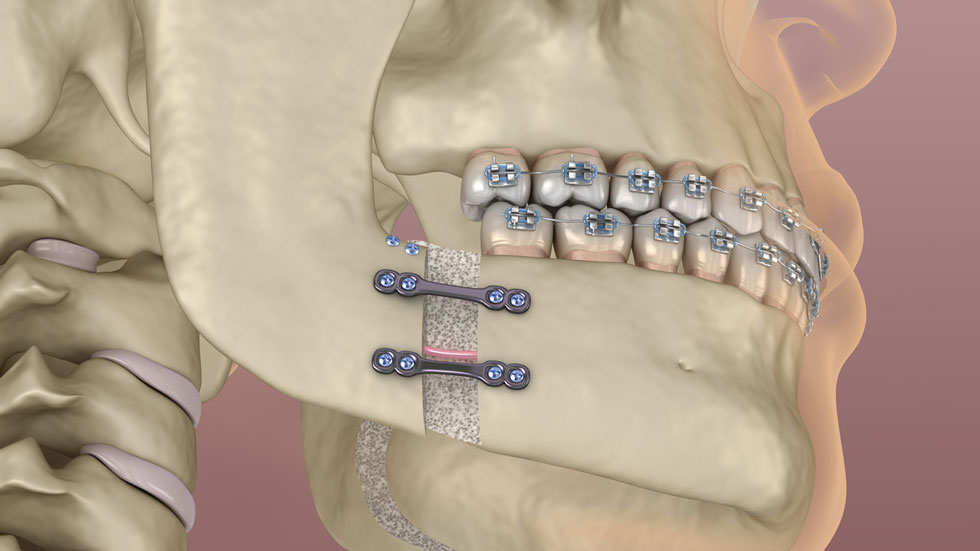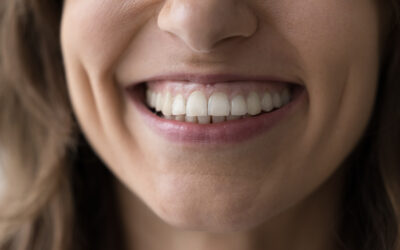Orthodontists see a wide variety of smiles come through their clinical doors; from overbites, underbites, and everything in between, there isn’t much these oral engineers can’t fix.
As dentists who complete additional specialized training in orthodontics and dentofacial orthopedics, they are experts at evaluating and diagnosing abnormalities in the facial structure, jaws, and the alignment of developing and adult teeth. Most patients who require orthodontic treatment can correct their bite issues through comprehensive treatment, which takes anywhere from 1-3 years to complete, typically beginning in their early teens. There are, however, many patients who present more complex orthodontic issues that require the recruitment of additional tools and medical specialists. This article will discuss complex orthodontics and the components involved in diagnosing and treating these cases.
To understand what qualifies as a complex case of orthodontics, let’s first discuss how Orthodontists classify a patient’s bite profile. Orthodontists use three categories to identify malocclusions (bad bites) and devise treatment plans: class I, class II, and class III. A class I bite signifies a normal bite in which the jaws and teeth fit together exactly as they should. From the sound of it, you may think this diagnosis means the bite is perfect and no treatment is needed, but a class I bite may still have issues with overcrowding or excessive spacing, as well as deficient width and length in the upper or lower arches. A class II bite is when the lower jaw sits disproportionately behind the upper jaw, creating an overbite. A class III bite is the inverse of a class II bite; the lower jaw protrudes outward, and the upper front teeth are tucked behind the lower teeth.
What is Considered Complex Orthodontics?
Patients with complex orthodontic issues can have any class of malocclusion but require treatment modalities in addition to braces or Invisalign to comprehensively perfect the entire smile. They may present with missing or impacted teeth and require tooth extractions to create space for proper alignment, the use of temporary anchorage devices, or jaw surgery. Let’s dive deeper into these complex orthodontic treatments to understand further how they work.
Tooth Extractions
Extracting teeth may sound counterintuitive to promoting oral health but in some cases, it’s exactly what is needed for orthodontic success. Repositioning the teeth into proper alignment won’t be possible if a patient’s mouth is too small to accommodate all the permanent teeth. In fact, repositioning crowded teeth in a deficient arch may force the teeth to move outward in a forward direction, which can lead to gum recession and protruding lips or front teeth, negatively affecting facial appearance.
If caught at an early age, orthodontists can expand an otherwise deficient arch to help make room for the developing adult teeth. Though extremely effective in most cases, expansion therapy may not work for patients with extreme crowding. To create space, an orthodontist will remove specific teeth, typically the top and bottom premolars, and use the space left behind to realign the smile so the upper and lower jaws come together perfectly, and the crowding is resolved.
Impacted Teeth
Impaction occurs when a tooth does not erupt through the gums or bone properly, resulting in potential discomfort with the bite function and appearance of the smile; impacted teeth can be fully impacted or partially impacted, and are oftentimes inappropriately oriented in the mouth. If left unresolved, impacted teeth make oral hygiene difficult and can result in tooth decay or gum disease because the tooth structure is not available for proper brushing and flossing.
Wisdom teeth are the most notorious impacted teeth and typically develop in the late teens or early twenties, which is when most dentists recommend they be removed. In addition to creating hygiene issues, impacted wisdom teeth may apply excessive force on the adjacent molars causing them to shift toward the center of the mouth and crowd additional teeth.
Any tooth can become impacted and create an orthodontic problem. In many cases, these teeth require extraction. However, if an orthodontist can integrate an impacted tooth into alignment, they do so by surgically exposing the tooth with the assistance of an oral surgeon. The oral surgeon will numb the area with local anesthetic and remove the excess gum tissue covering the site. Once the tooth is exposed, an orthodontist will apply a bracket on the stuck tooth and reorient it in the appropriate position. The upper maxillary canines are another set of commonly impacted teeth that can be corrected with the use of braces and/or oral surgery.

Temporary Anchorage Devices
Temporary Anchorage Devices (TADs) are an excellent orthodontic tool that can be used in addition to braces to help speed up treatment time by directing additional, precise force to target areas of the mouth, and can often replace less comfortable or awkward appliances like headgear. TADs are about half the size of a dental implant screw and are placed using general anesthesia. The TAD is inserted into the jawbone through the gum tissue; once in place, it provides incredible stability and serves as an anchor to support movement during orthodontic treatment. An orthodontist will determine the placement and how many TADs will be required to achieve the best possible orthodontic results.
Orthodontists use elastics to connect the TAD to special brackets with hooks which enable force from the elastic to shift the teeth and bone toward the direction of the miniscrew. This is reported to be much more comfortable and effective than headgear since complete compliance is difficult with such bulky appliances. Once the orthodontic correction is complete, the TADs are removed. The removal process is so easy that numbing the area is not required. After a few days, the gum tissue where the TAD was placed is healed.

Corrective Jaw Surgery
Some patients may have jaw deformities that braces alone cannot correct and the assistance of an oral surgeon is required to surgically move the jaws into the appropriate place. As mentioned previously, orthodontists can manipulate jaw growth in young, developing children with expanders, but this has its own limitations, especially if patients’ jaws have stopped developing. For some patients, jaw surgery (orthognathic surgery) is required.
In addition to providing an optimal bite, jaw surgery can drastically change a patient’s facial profile. In the case of someone having a deficient lower jaw, their chin is disproportionally set back toward the face. By surgically extending the lower jaw bone, a surgeon is able to improve the facial profile, occlusion, and breathing function. This highly complex treatment can also be used to correct temporomandibular disorders that affect the temporomandibular joint (TMJ), which is the area of muscles and joints between the lower jaw and the base of the skull that helps facilitate movement of the mouth.
An orthodontic case requiring jaw surgery usually takes two to three years from start to finish. An orthodontist and oral surgeon work together to plan the treatment to provide the best possible results to the patient. An orthodontist will begin by applying braces and correcting the bite so the upper and lower jaws fit together perfectly. Once this round of treatment is complete, the oral surgeon will surgically cut the jaw bones and move them into the appropriate position, creating a new, aesthetically pleasing facial profile that provides ample space for healthy oral function. Titanium plates and screws are used to hold the bone together in the new position, and orthodontic elastics are used while the bite settles. Though the onset of treatment seems daunting and the journey long, orthodontic jaw surgery is life-changing for patients who commit to the process. Those who complete treatment report high satisfaction with their new smiles, as well as improved self-confidence and quality of life!

Why You Need a Board-Certified Orthodontist for Complex Treatment
While some orthodontic issues are fairly easy to correct, other, more complicated cases require much more specialization and diverse treatment techniques to deliver optimal results. A board-certified orthodontist is a dentist who has received an additional 2-3 years of education in programs approved by the American Association of Orthodontists and the American Dental Association. This residency, Orthodontics, and Dentofacial Orthopedics, teaches orthodontists about craniofacial anatomy, bite disorders, jaw issues, bone growth problems, and biomechanics, making orthodontists tooth and bone engineers! The program involves rigorous academic and clinical studies where students complete orthodontic care for patients under supervision. Once their education and training are complete, orthodontists must pass their certifications to begin treating patients independently.
In the case of complex orthodontics, a board-certified orthodontist will have the technology and skills to diagnose and treat these unique orthodontic issues with efficiency and confidence. At Daia Orthodontics & TMJ Orthopedics, Dr. Daia offers complimentary consultations where he takes photos and x-rays to evaluate and diagnose treatment options to deliver the best possible outcome for our patients that suits their goals and lifestyles. We ensure all patients have a clear understanding of the presented treatment options and guide them throughout the process to a new, beautiful functional smile.
If you’re interested in learning more about how orthodontic treatment can change your life, contact us today to schedule your free exam. No matter the orthodontic challenge, we’re here to give you the smile you’ve always wanted.




